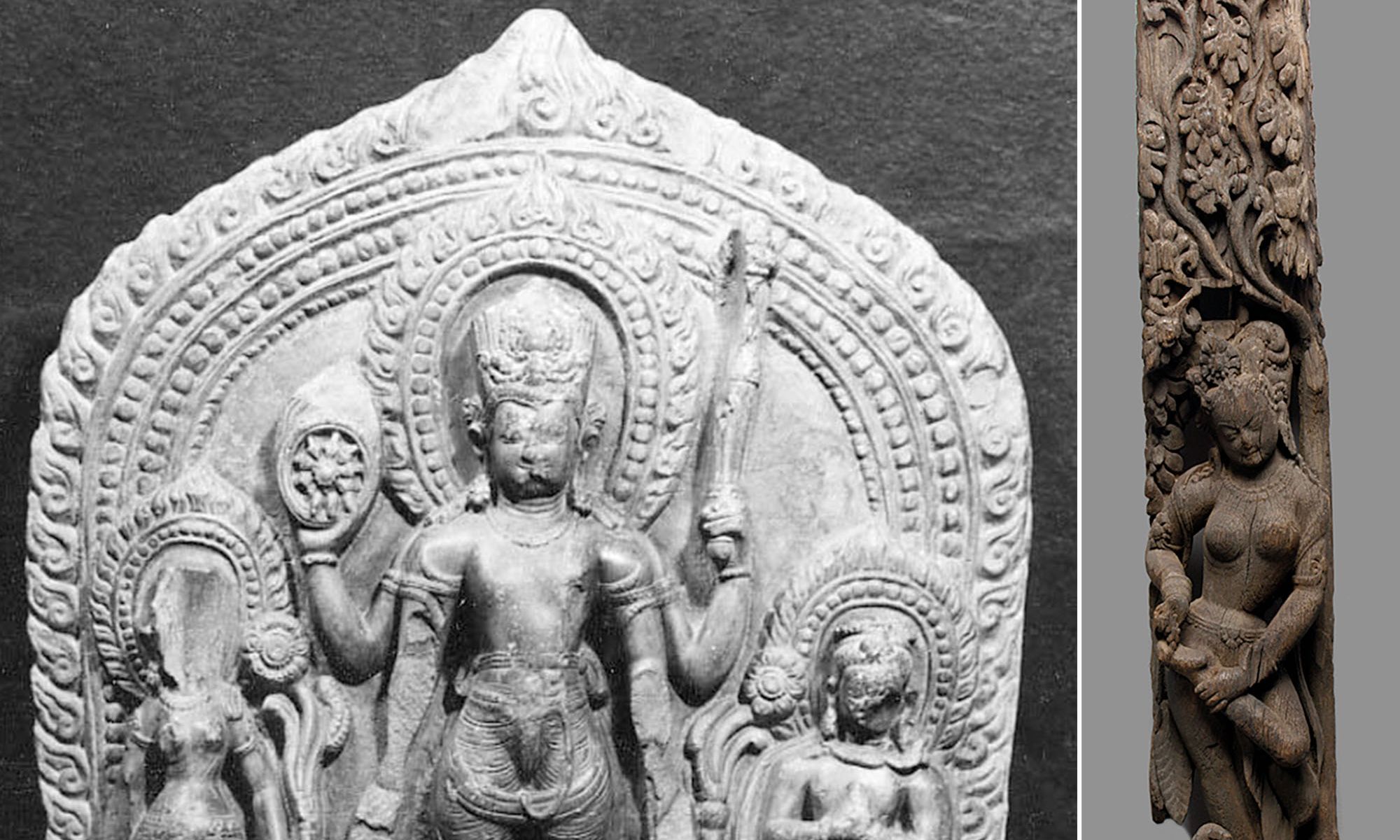The 11th-century stone sculpture Vishnu Flanked by Lakshmi and Garuda (left) and the 13th-century wood temple strut (right) that the Metropolitan Museum of Art is repatriating to Nepal Courtesy the Metropolitan Museum of Art, New York
The Metropolitan Museum of Art has returned two centuries-old sculptures to Nepal after information provided to the museum by Nepalese authorities made clear they should be repatriated. The two objects—Vishnu Flanked by Lakshmi and Garuda, an 11th-century stone sculpture, and an intricately carved wooden temple strut from the 13th century—are the subject of an agreement signed by Met director Max Hollein and Bishnu Prasad Gautam, the acting consul general of Nepal in New York. The museum will now arrange for the objects' transportation back to Nepal.
“The warm cooperation we have received from the museum has deeply contributed to Nepal's national efforts to recover and reinstate its lost artefacts,” Gautam said in a statement.
The Met purchased the temple strut in 1988. The stone sculpture of Vishnu was given to the museum in 1995 by Evelyn Kossak via the Kronos Collections, according to a (since-deleted) online catalogue entry that lists Kossak as the sole provenance record for the artefact. The Kronos Collections are connected to Steven Kossak, a longtime curator in the museum’s Asian-art department.
“We value the long-standing relationship we have fostered with scholarly institutions and colleagues in Nepal, and we are committed to continuing the ongoing and open dialogue between us,” Hollein said in a statement.
In August 2022, the museum returned a wooden temple strut that Evelyn Kossak had donated to the museum to Nepal, prompting further scrutiny of objects tied to the Kossaks. That temple strut has since been reinstalled in its original place, at the Itumbaha monastery in Kathmandu. In 2018, the Met returned two stone sculptures from the 10th and 12th centuries to Nepal; in 2021, it returned another from the 10th century, Shiva in Himalayan Abode with Ascetics.
Amid growing scrutiny of its collections—not only of Nepalese artefacts, but also Greco-Roman and Egyptian antiquities and sculptures from Cambodia, India and other countries—the Met announced last spring that it would form an internal provenance-research team.

